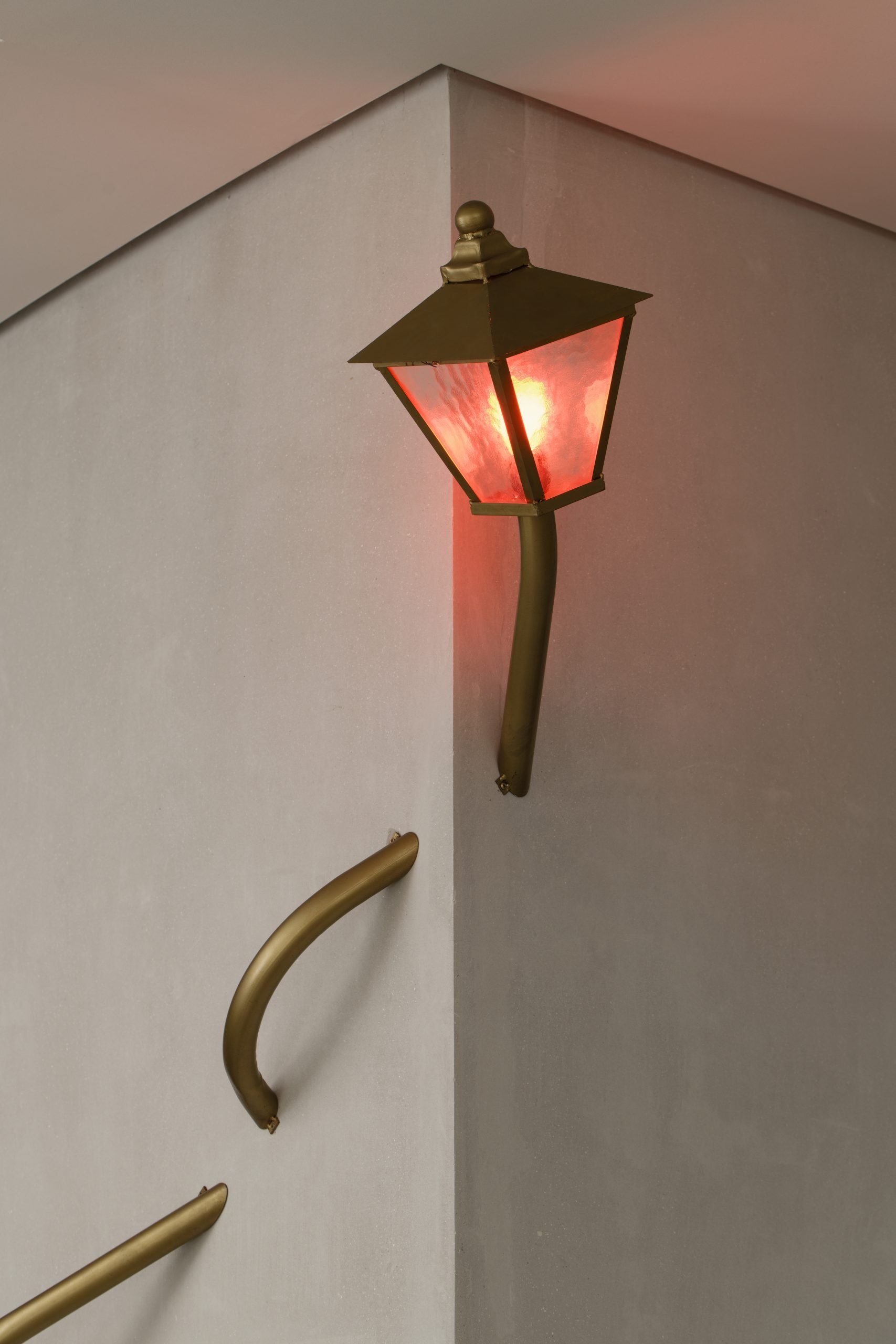
Martin Kippenberger, Untitled (from the Lantern series), 1989
Bourse de Commerce – Pinault Collection
Chosen by exhibition curator Jean-Marie Gallais
Martin Kippenberger is one of my favorite artists and this is an important work. This “drunk streetlamp” is on long-term display in the Bourse de Commerce – Pinault Collection and is a little bit hidden; visitors have to find it in their own way. I like that they might find it by accident or chance. Either way, you can relate to it very quickly, with its cartoon-esque appearance.
In the first moment you might see the humorous aspect, and the surrealist tone as it goes in and out of the wall. The streetlamp throughout art history is important because it changed humans’ relationship with the night as modernity developed—a lot of artists would go out and be part of this bohemian nightlife. The streetlamp became a kind of companion for poets and artists, and especially the Surrealists. There are a lot of paintings by Magritte, for instance, where the lamppost is the central subject.
Martin Kippenberger, Ohne Titel (1989). Pinault Collection. Exhibition view, Bourse de Commerce – Pinault Collection, Paris, 2024. Photo: Aurélien Mole / Pinault Collection.
Visitors might also have a more melancholic moment with the work; it relates to loneliness. You might be alone in the street at night and the only “person” you can talk to is the lamppost. Kippenberger’s lamppost is also drunk, echoing a moment of dizziness where reality gets transformed. It also references the red-light district with its red lightbulb. I like to think of it as a self-portrait of Kippenberger, an alter-ego of the artist. There is existentialism in the work. The feeling of being alive but being alone.
There is an interesting story about this series of works. Before Documenta IX in 1992, in Kassel, Germany, Kippenberger went to the office of its curator, Jan Hoet, with his students and sprung an unplanned interview on him, which he published without authorization. In response, Hoet included him in the list of artists for the exhibition, even though he didn’t plan to show him. When Kippenberger saw this, he decided to go to Kassel, placed one of his lampposts temporarily on Walter de Maria’s public sculpture Vertical Earth Kilometer (1977) and took a photo of it. The lamppost is curved and he added a tear as if it was crying. He also edited the photograph on the posters he made of the work in situ, so that the institution’s name in the background, “Fridericianum” was changed to “Melancholie.”
I love the fact that Kippenberger had an ongoing collection of photographs of lampposts from all over the world, he published some of them in his seminal artist book Psychobuildings in 1988.
—Jean-Marie Gallais, as told to Emily Steer.
What artwork hangs across from Mona Lisa? What lies downstairs from Van Gogh’s Sunflowers? In “The Permanent Collection,” we journey to museums around the globe, illuminating hidden gems, sharing stories behind artworks that often lie beyond the spotlight.